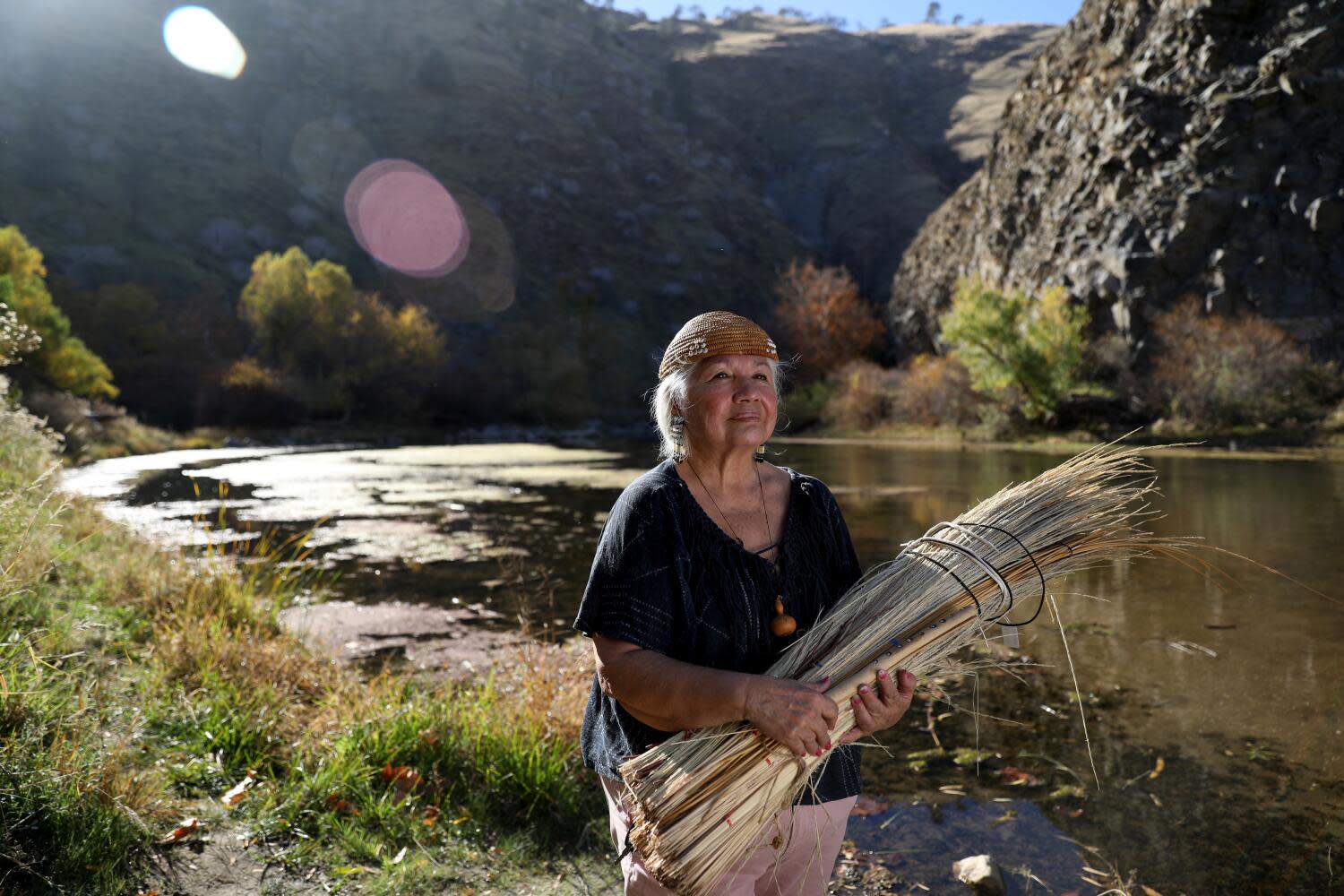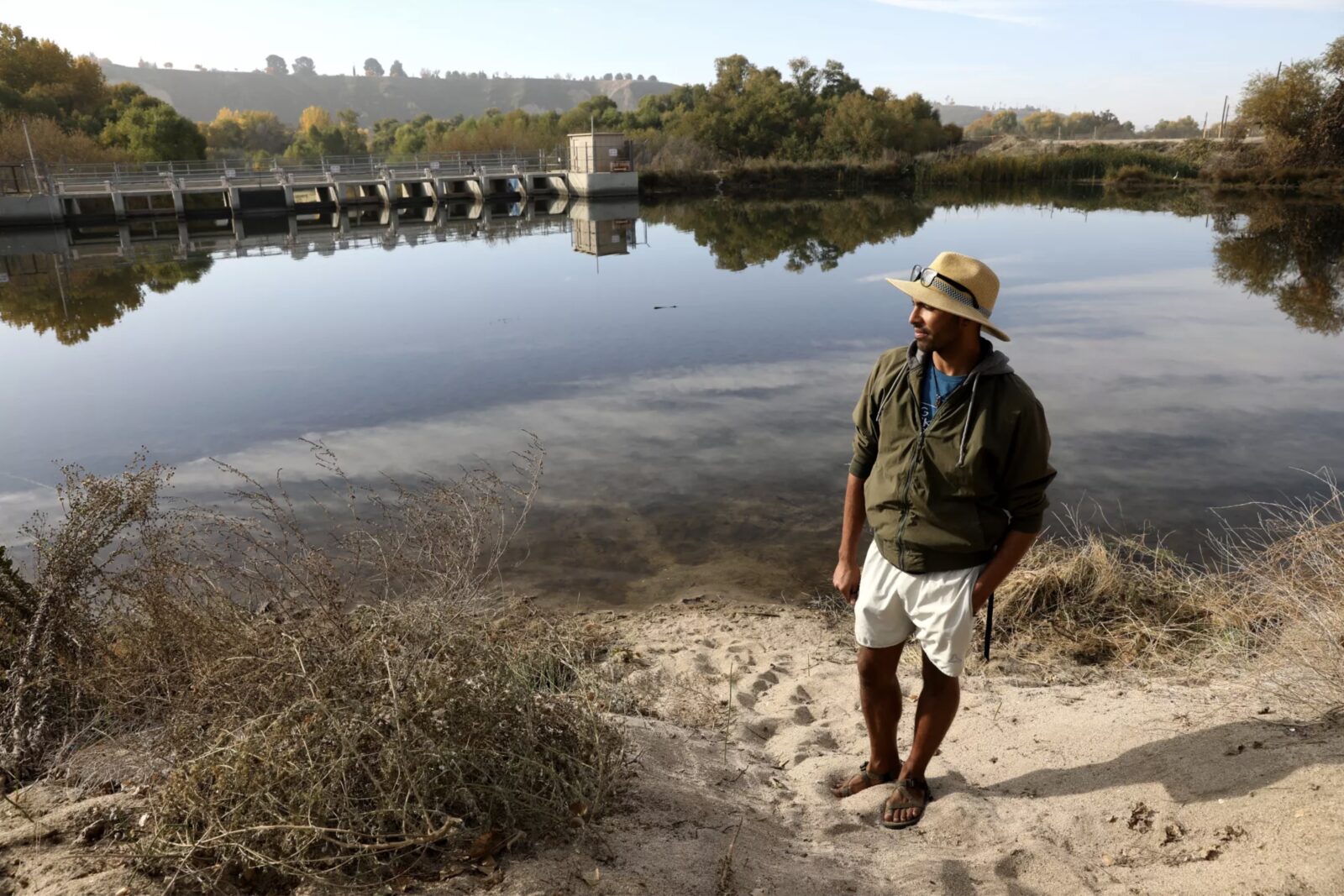This article by Ian James originally appeared in the Nov. 1, 2023 edition of the Los Angeles Times. It is shared here because of the story’s interest to our environmental advocacy community. It is not intended for republication.
By Ian James
Environmental activists in Bakersfield have won an initial victory in their legal fight to keep water flowing in the Kern River, which for many years was reduced to a dry, sandy riverbed.
A judge has granted a preliminary injunction preventing water diversions that would dry up the river, requiring sufficient water to provide for fish and keep the Kern flowing in the city.
“This is really a reason to celebrate,” said Kelly Damian, a spokesperson for the group Bring Back the Kern. “This is going to have such a positive long-term impact on the city, on the community, on the future for our town.”
The order, issued Monday by Kern County Superior Court Judge Greg Pulskamp, will remain in effect pending a trial and decision in the case.
Six environmental groups sued the city last year, saying that continuing to allow so much water to be taken from the river was harming the environment and the community.
The city controls several weirs where water is diverted. Some of the water is used in Bakersfield, but much of it goes to supply agriculture.
For years, so much water has been routed into canals and delivered to farms that the river has usually disappeared on the northeast side of Bakersfield, leaving miles of dry riverbed in the city.
Since the lawsuit was filed, the Kern River has surged back to life with abundant runoff from last winter’s storms and the historic snowpack in the Sierra Nevada. The river was so swollen with floodwaters in May that officials opened a rarely used relief valve, routing some of the water into the California Aqueduct to be used in Southern California.
The river has continued flowing through Bakersfield, and fish have been swimming in the currents.
The judge ordered the city to operate its six weirs to ensure sufficient water in the river to keep fish “in good condition.”
The judge cited the state Constitution and existing laws, as well as previous court rulings. He wrote in the order that the plaintiffs “have a very high likelihood of succeeding on the merits.”
“The court ordered a river that for the most part has been dry 99 percent of the time, for the last hundred-plus years, will now flow,” said Adam Keats, a lawyer representing environmental groups. “That’s a really incredible thing.”
The plaintiffs have argued that allowing water diversions to dry up the river violates California’s public trust doctrine, the principle that certain natural resources must be preserved for the public.
Keats said the court recognized in the ruling that California has long upheld a legal principle that public trust waters like the Kern River “can’t be sacrificed for mere agricultural profit by a bunch of agribusinesses.”
Water that is diverted from the river flows to farms that produce almonds, pistachios, grapes, oranges and other crops.
How much less water might be extracted from the Kern River for agriculture has yet to be decided, and could depend on how wet this winter turns out to be.
The court’s order does not affect Bakersfield’s water supplies or deliveries of drinking water.
Colin Pearce, an attorney for the city, said he was reviewing the decision and would not comment.
The judge ordered the parties to “engage in good faith consultation” about establishing river flows.
Keats said the ruling is “going to preserve and save that river for the foreseeable future.”
The Kern River historically filled two shallow lakes and vast wetlands in the southern San Joaquin Valley. Over the last century, as more water was taken for expanding farms, Buena Vista Lake and Kern Lake dried up and were transformed into farmland.
Nowadays, the river reaches its end among farm fields that once were wetlands. Only occasionally, in extremely wet years, has the river grown so large that its waters continue flowing farther.
This spring, as plentiful runoff from the Sierra Nevada reawakened the Kern, other rivers poured onto the valley floor and reformed Tulare Lake, inundating thousands of acres of low-lying farmland.
The environmental groups — which also include the Center for Biological Diversity, Kern River Parkway Foundation, Water Audit California, the Sierra Club and Kern Audubon Society — have suggested that water for agriculture could be diverted or pumped farther downstream, allowing the Kern River to flow freely through the community.
Scott Kuney, a lawyer representing North Kern Water Storage District, which supplies water to farmlands, said the Kern is a “hard-working river that supports the economy, jobs and way of life” in the area.
“We look forward to working with all parties to determine a viable path forward that allows the Kern River to continue working hard to meet the needs of all water users,” Kuney said in an email.
John Buse, senior counsel for the Center for Biological Diversity, said the court recognized in the ruling “that we can do the right thing and keep water flowing in the river without affecting the city’s water supply.”
Fish that have been spotted in the river recently include native California hitch as well as non-native largemouth bass, Keats said.
“You put the water back in, and fish return quickly,” Keats said. “People are always blown away with how fast nature returns when you give it a chance.”
William McKinnon, an attorney for Water Audit California, said the court’s decision “gives the environment a seat at the table, the negotiating table.”
“We’re very excited about this because I think it’s going to bring life to the Kern River, and that’s going to bring life to downtown Bakersfield,” McKinnon said. “I think that’s pretty damn cool.”
Keats said many other rivers and streams throughout the state need similar efforts, and other court cases are underway. Keats is working on two cases involving public trust issues, one relating to the Merced River and the other to the Santa Clara River.
In Bakersfield, residents have banded together to campaign for keeping water in the Kern River, and have attended recent court hearings.
Delia “Dee” Dominguez, a leader of the Yowlumne Yokuts tribe, said she is elated about the ruling.
Dominguez’s ancestors lived along the river and its tributaries. She said having the river flowing again allows the ecosystem to rebound and restores a natural gathering place for people.
“It brings everything back. It brings hope,” Dominguez said. “We have lots of hope now.”
She said ensuring water to heal the river demonstrates that “there can always be a turnaround.”
“The river is coming back. The rope has been taken away from its neck, and now it can breathe,” Dominguez said. “It will continue to go down that riverbed like it has done for centuries.”
Damian, a high school English teacher, has joined other residents doing volunteer work for Bring Back the Kern. In addition to supporting the lawsuit, the group’s members have spoken repeatedly at meetings, urged people to sign their petition, and — when the river was dry — marched along the riverbed.
Damian often runs on a bike path beside the river. And in the last year, she has gone from seeing a parched landscape to witnessing the river’s rebirth.
“The amount of life that has come back to that river is really just astounding,” Damian said.
She has noticed new plant growth and many birds congregating along the water. She has also seen people of all ages walking and biking in growing numbers along the river.
Damian said she thinks it’s time for more discussion in the community about environmental restoration, public access, recreation opportunities and how Bakersfield can flourish around its newly flowing river.
“For us, this really means everything,” she said. “This is really a before-and-after moment.”
This article originally appeared in the Nov. 1, 2023 edition of the Los Angeles Times and is also available without paywall at Yahoo. Photos by Gary Coronado © 2021 Los Angeles Times.


